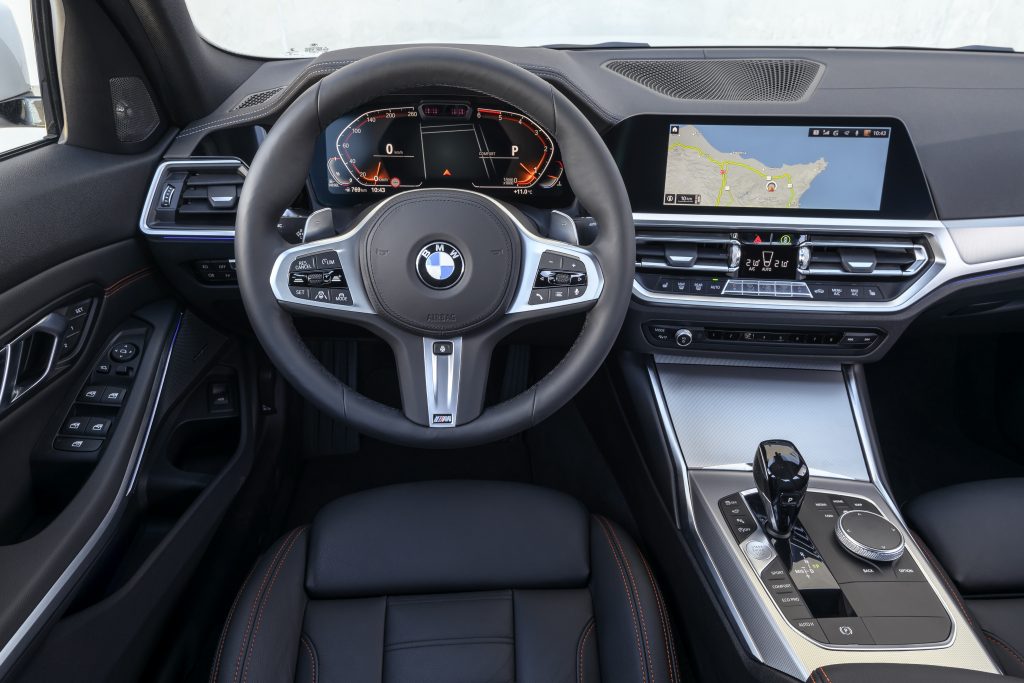Giesecke+Devrient says eSIM tech would allow OEMs to enable a more seamless connected experience automatically. By Jack Hunsley
In-vehicle connectivity has quickly transitioned from a creature comfort to an expected standard fitment in the automotive industry. As such, any expertise in enabling an enjoyable and seamless in-vehicle connected experience is now highly valued by automakers, which are eager to make the most of the latest connected tech innovation.
Simple yet effective
Viewing the vehicle as an IoT device in its own right could be one way of enabling satisfactory future connected vehicle experiences. One proponent of this thinking is Giesecke+Devrient (G+D). Based out of Munich, Germany, G+D is well-versed in numerous IoT verticals, with the company developing technology for secure car connectivity since 2012.
One of its most recent automotive-focused innovations is its Dual-SIM Dual-Active (DSDA) solution. DSDA sees vehicles equipped with two embedded SIMs (eSIM), one to be used for vehicle services such as eCall, navigation or traffic information and the second for the driver’s private information and in-vehicle entertainment services. As Soenke Schroeder, Director Global Product Marketing and Innovations at G+D, told Automotive World, the goal is to create a smoother in-vehicle experience for users.
“For many years now the amount of data being generated by and flowing to cars has been increasing, especially given innovations in connected services and autonomous driving,” he said. “At the same time people in our digital society are consuming more and more data with their smart devices and they now want to use that data in-vehicle. The result is that more automakers have decided that two independent eSIMs is the way to go.”
In-vehicle connectivity has quickly transitioned from a creature comfort to an expected standard fitment
Integrating not one but two eSIMs brings a couple of key benefits. First, by running two eSIMs automakers have the option to split connected responsibilities between the two eSIMs. This can help ensure all services run more smoothly and more reliable, with bandwidth divided more evenly. The second benefit centres around the consumer’s additional connected needs. For instance, as Schroeder explained, a key selling point for OEMs is the potential to move past Bluetooth technology. Though a common sight in practically all modern vehicles, Bluetooth can be a problematic technology to include.
“It is not uncommon for users to have issues connecting their phone to the car via Bluetooth as not all mobile devices are 100% compatible and not all cars are either,” he said. “The knock-on effect is that automakers must conduct many tests to ensure their Bluetooth system works as expected. This is a huge effort. A Bluetooth connection could also be a gateway for malware in both directions.”
Installing an eSIM instead removes this hassle. Rather than relying on Bluetooth, the connection from phone to car is instead run via the eSIM. “The advantage of DSDA is that the phone SIM can be activated automatically when the driver enters the car,” added Schroeder. “When you enter your car, your car becomes an extension of your mobile phone, similar to how any wearable smart devices do when activated. You can continue seamlessly with your calls and using your mobile infotainment services—such as music and video streaming.”
Easy installation
G+D is confident the setup will offer manufacturers and consumers greater flexibility. For the former, Schroeder stressed that it is not too complex to install DSDA in a completely new model. On the consumer side, he added that owners can have up to six different profiles in one car, allowing multiple occupants to easily transmit their connected lives into their vehicle.

To drive even greater levels of flexibility, G+D also offers secure eSIM management (subscription management). In practice, this allows the vehicle’s eSIMs to switch between different network operators, a difficult task given that these embedded SIMs are soldered into the vehicle. “If you’ve been a T-Mobile customer, for instance, for two years but then plug in a card from Vodafone into your phone, your phone switches seamlessly to the new network,” said Schroeder. “For cars and IoT devices this is much more difficult – so with eSIM management, device makers and car OEMs can remotely switch networks easily without exchanging the SIM or eSIM – for its complete lifecycle.”
Future SIM technology
DSDA is already drawing good attention from automakers. For instance, in February 2022 G+D announced that DSDA will be integrated into upcoming BMW models including the already released iX and i4. This builds on a partnership between the two companies that has run since 2018.
“Today’s drivers have different expectations of a car than in the past,” said G+D Mobile Security’s Chief Executive, Carsten Ahrens, on the announcement. “We are pleased that G+D has been the solution partner for the BMW Group in the area of eSIM for many years, and now also for the new DSDA solution. Together, we are creating the basic requirement for a new kind of individually networked mobility.” Schroeder added that G+D is also in talks with other as-of-yet unnamed OEMs to install DSDA in their vehicles too.
As for where G+D sees automotive SIM technology moving, Schroeder suggested that there’s growing interest in integrating even smaller integrated SIM cards. G+D’s current eSIM measures five by six millimetres, but there could be scope to have integrated SIM cards that are smaller than a square millimetre. However, for the time being, G+D is firmly focused on pushing DSDA out into the market. “The dream is for DSDA to be in every car,” Schroeder added.
